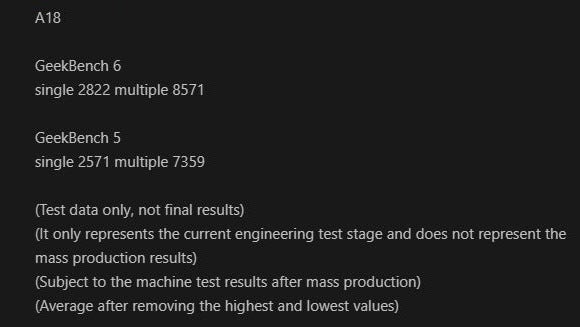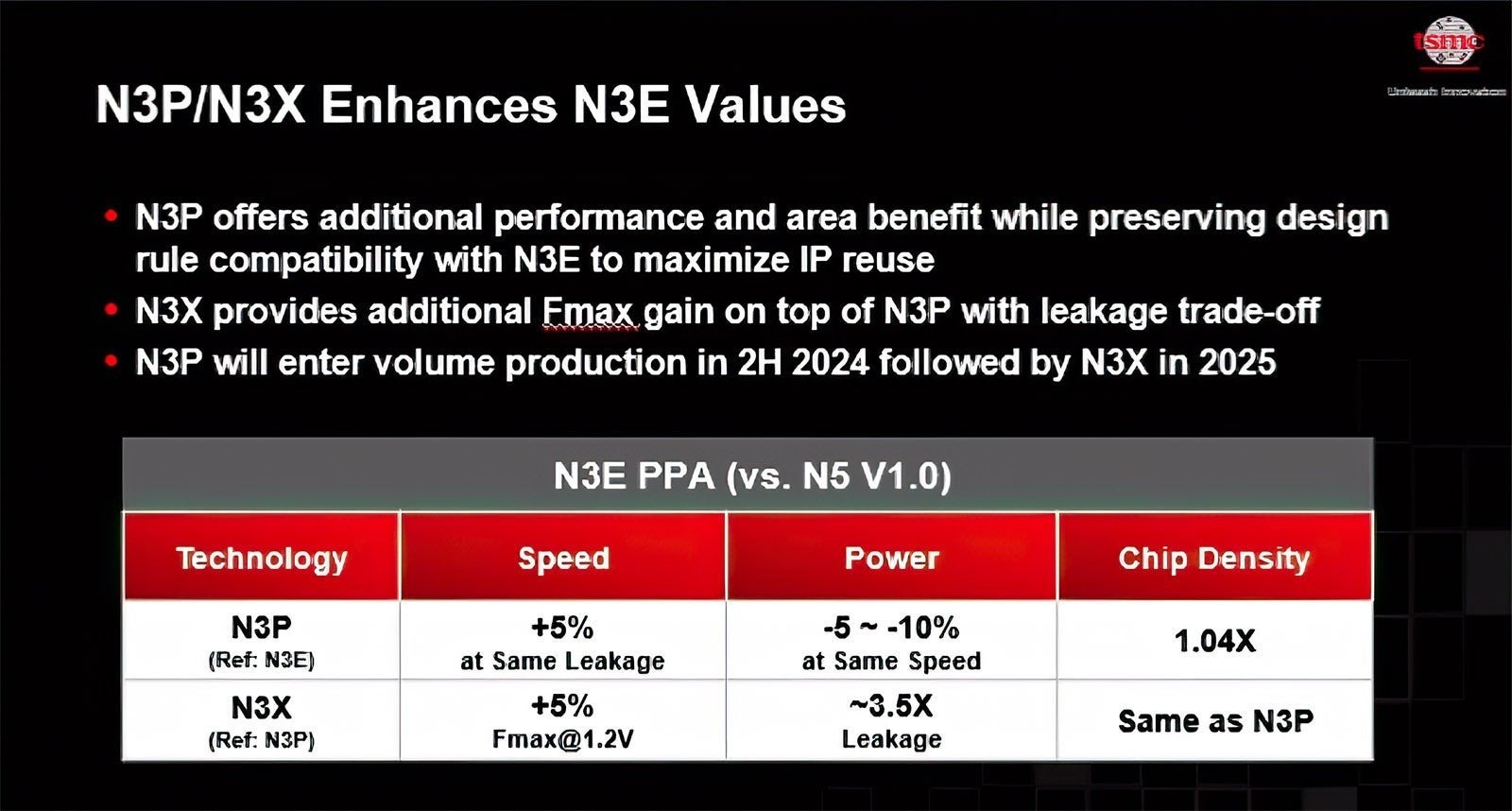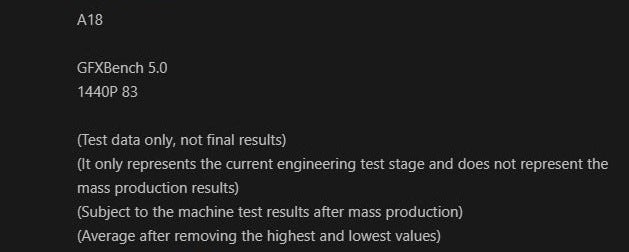Apple A18 Pro processor specs and features
- 2x 4.05 GHz cores
- 4x efficiency cores
- 6x GPU cores
- 3nm TSMC N3P production process
- 40% faster graphics
A18 Pro processor cores and clock count
The Apple A18 Pro will feature both a 6-core main processor and a 6-core graphics processing subsystem. Apple reportedly wanted to clock the two A18 Pro performance cores to the exorbitant 4.95 GHz clock frequency to no avail as the thermal management stability and power draw just weren’t there at those speeds. As a result, it reportedly settled for the 4.05 GHz clock count, which will still be on par with the expected Snapdragon 8 Gen 4 speeds.
The iPhone 16 Pro and iPhone 16 Pro Max, however, would be faster than their predecessors with the A17 Pro whose peak speed is lower, at a 3.8 GHz clock frequency, with the corresponding lower benchmarks.

Alleged Apple A18 Geekbench score | Image credit – DCS/Weibo
Thus, any speed advantages that the Apple A18 Pro on the iPhone 16 Pro may have before the A17 Pro on the iPhone 15 Pro might be coming solely from the increase in peak clock speeds, rather than the fact that it will be made on a more advanced production node.
A18 Pro production process
This is par for the course, as newer generations of a production node typically brings stability and power draw improvements, rather than some grand performance boost, so Apple might indeed be using it to add features to the A18, instead of clock speed.
Following N3 technology, TSMC introduced N3E and N3P, enhanced 3nm processes for better power, performance, and density.
TSMC, 2024
The top-shelf Apple A18 Pro chipset version, however, may be crafted on TSMC’s more expensive, lower yield N3P process that is 5% faster and consumes up to 10% less energy than the N3E (Enhanced) process that the A18 in iPhone 16 would be using.


Advanced TSMC 3nm N3P vs N3E processor technology roadmap. | Image credit – TSMC
A18 Pro graphics
Where the iPhone 16 Pro series will shine brighter is in the gaming, computational photography, AI, and other departments that need a powerful graphics subsystem. Compared to the current iPhone 15 Pro GPU, the Apple A18 Pro graphics benchmarks show that it may nearly 40% faster. That’s a huge jump, but only for the Pro models, where Apple will provide one extra GPU core.


Teased Apple A18 GFXBench score | Image credit – DCS/Weibo
A18 Pro and Apple Intelligence AI calculations
- >38 Trillion Operations Per Second
The 2024 iPhones will be the first line that will not only support Apple Intelligence on all the handsets in the iPhone 16 series, but will also be future-proof for the upcoming Large Language Model bump from the current 3B LLM to a 7B LLM model.
In fact, the Apple A18 Pro is expected to top the 38 TOPS of Apple’s powerful M4 chip that is currently in its latest iPad Pro (2024) models, so we can easily expect something north of 40 TOPS for the Neural Engine in the Apple A18 Pro chipset.
Apple A18 will leave the iPhone 16 behind
Still, the difference between the iPhone 16 and iPhone 16 Pro processors will be a lot smaller compared to the previous two iPhone generations, and that has to count for something.
